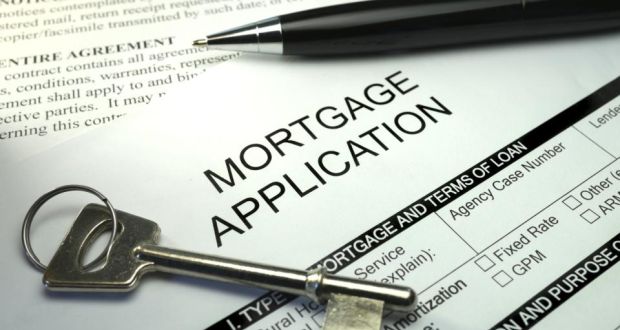New Mortgage rules in Canada don’t solve the real issue of housing
New Mortgage rules in Canada don’t solve the real issue of housing.
Did the world or better yet Canada learn from the mortgage crisis, which rocked every bank, with those dealing with subprime mortgages getting hit the hardest? It seems steps are being taken to deal with mortgage problems but are we crying over spilled-milk, is it too late?
The new mortgage rules in Canada are based on the purchase price of the property and the down payment.
First slab is home costing between $500,000 to One Million.
Second Slab is for home costing more than a Million.
If a home costs more than $500,000 a first time buyer must come up with 5% as a down payment and everyone else, would have to put double that amount 10% down payment to purchase the house. Double the price to one million and your down payment must also double to, 20% of the value of the property.
The logic of this seems to be based on simple math and common sense. There is a direct correlation between what you pay as a down payment and your monthly mortgage payment. More you pay upfront, smaller the mortgage payment, and the less risk of default. This is all fine and makes sense, most real estate gurus preach it also – but there is a fundamental problem to this.
The main issue is the price of the property itself, when the prices are as high as they are right now, it makes it very hard for first time buyers to jump in. For example, average price of any home in the Toronto area, when condos and semi-detached homes are included, is $639,000. A first time buyer must come up with $31,950 as a down payment and if you are not a first time buyer, money you would have to put down must be $63,900.
With that kind of money, property buying is surly moving towards those with money. Property price to income ratio in Toronto is already around 9 and in Vancouver it is more than 12. This is one of the main reason Thunder Bay Ontario is ranked number 1 city in Canada to buy property in. The average 2015 home cost in Thunder Bay just under $216,000, a little over two and a half times the average household income.
The minimum down payment rule is flawed and is not a real solution to the housing problem in Canada. Most people buy homes based on minimum monthly payments they can afford. These payments are derived based on all expenses for the month. When the cost of money rises with interest rates, it disturbs your budgeting.
The minimum payment of 10-20% also effects those who are looking to buy the property as investment. Interest rates, have as profound an effect on the value of income-producing real estate as on any investment vehicle. Because the influence of interest rates on an individual’s ability to purchase residential properties (by increasing or decreasing the cost of mortgage capital) is so profound, many people incorrectly assume that the only deciding factor in real estate valuation is the mortgage rate. However, mortgage rates are only one interest-related factor influencing property values.
Because interest rates also affect capital flows, the supply and demand for capital and investors’ required rates of return on investment, interest rates will drive property prices in a variety of ways. When the investor has to put down 10 – 20% to purchase a property, it will effect the liquidity in the market.
This shows when the interest rates rise, only the cost of borrowing goes up but no codification of the down payment rules will stop the plummet. And suddenly, a lot of recent mortgages will wind up underwater, just like they have in the biggest mortgage crises of our time in the recent years.
Government should do more to educate the people on what interests rates really mean.
If you look at historic records in Canada, you will be able to see that home prices don’t drop when rates rise. The trend is quite the opposite, yes it is hard to believe but it is true.
If you look at the price of property today compared to what it was five years ago, there is a noticeable movement tipping the scale higher. “If You Don’t Buy a House Now, You’re Stupid or Broke”, I suggest that prospective home buyers should pay more attention to today’s historically low interest rates than to the price of the home.
This is not to start an argument with anyone but it is mathematical common sense. Let me explain it with an example.
Only a quarter-point change in interest rates amounts to almost $3,000 for each $50,000 borrowed over the course of a 30-year fixed-rate mortgage. So, if you have decided to put down minimum down payment according to the new mortgage rule, which is $63,900 and borrow $600,000 to buy a house in Toronto – but you wait until mortgage rates in Toronto rise one full point, you will end up paying an additional $144,000 over the course of your loan.
The real way to deal with the housing issue is to have more affordable inventory. To do that, city governments must be looking at how other big markets are dealing with it. Just in Canada alone, look at Vancouver market, they are looking to build higher buildings to bring prices down. You can implement all the mortgage rules you want and offer mortgage default insurance but to really solve the issue at root – you must deal with the real issue at hand, which is reduce the cost of building, implement over valuing policies and all other aspects, which artificially drive up the cost of an area, so the newer inventory is more affordable.
Going higher is not a bad idea, done right, it will reduce the costs, current infrastructure of the city can be reused and more tax being generated within a shorter mile radius. Mortgage rules on it’s own is a shallow solution, which does not hit the real issue at hand. Real issue is to reduce the price of the homes.





